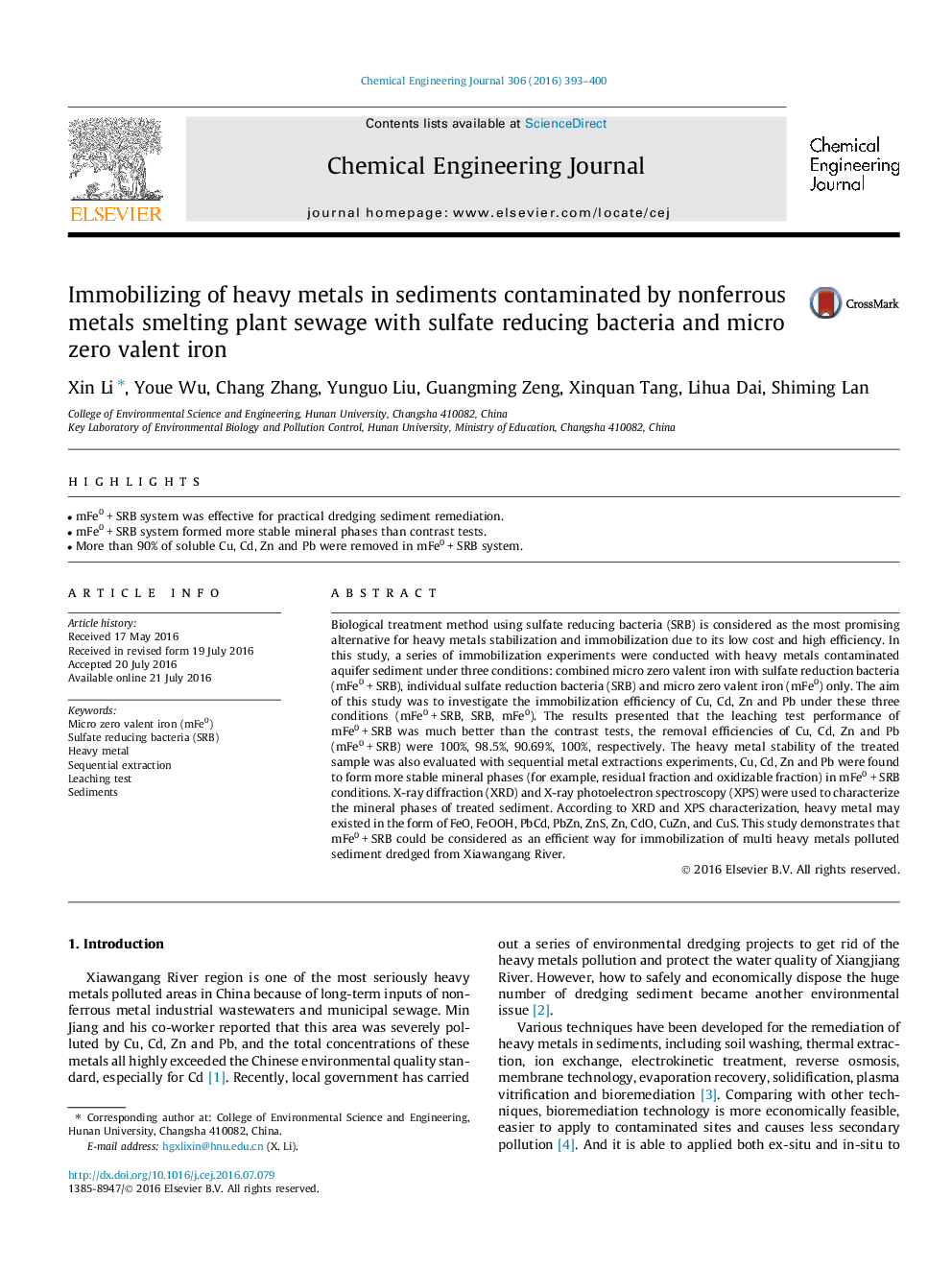| Article ID | Journal | Published Year | Pages | File Type |
|---|---|---|---|---|
| 145259 | Chemical Engineering Journal | 2016 | 8 Pages |
Abstract
Biological treatment method using sulfate reducing bacteria (SRB) is considered as the most promising alternative for heavy metals stabilization and immobilization due to its low cost and high efficiency. In this study, a series of immobilization experiments were conducted with heavy metals contaminated aquifer sediment under three conditions: combined micro zero valent iron with sulfate reduction bacteria (mFe0Â +Â SRB), individual sulfate reduction bacteria (SRB) and micro zero valent iron (mFe0) only. The aim of this study was to investigate the immobilization efficiency of Cu, Cd, Zn and Pb under these three conditions (mFe0Â +Â SRB, SRB, mFe0). The results presented that the leaching test performance of mFe0Â +Â SRB was much better than the contrast tests, the removal efficiencies of Cu, Cd, Zn and Pb (mFe0Â +Â SRB) were 100%, 98.5%, 90.69%, 100%, respectively. The heavy metal stability of the treated sample was also evaluated with sequential metal extractions experiments, Cu, Cd, Zn and Pb were found to form more stable mineral phases (for example, residual fraction and oxidizable fraction) in mFe0Â +Â SRB conditions. X-ray diffraction (XRD) and X-ray photoelectron spectroscopy (XPS) were used to characterize the mineral phases of treated sediment. According to XRD and XPS characterization, heavy metal may existed in the form of FeO, FeOOH, PbCd, PbZn, ZnS, Zn, CdO, CuZn, and CuS. This study demonstrates that mFe0Â +Â SRB could be considered as an efficient way for immobilization of multi heavy metals polluted sediment dredged from Xiawangang River.
Related Topics
Physical Sciences and Engineering
Chemical Engineering
Chemical Engineering (General)
Authors
Xin Li, Youe Wu, Chang Zhang, Yunguo Liu, Guangming Zeng, Xinquan Tang, Lihua Dai, Shiming Lan,
